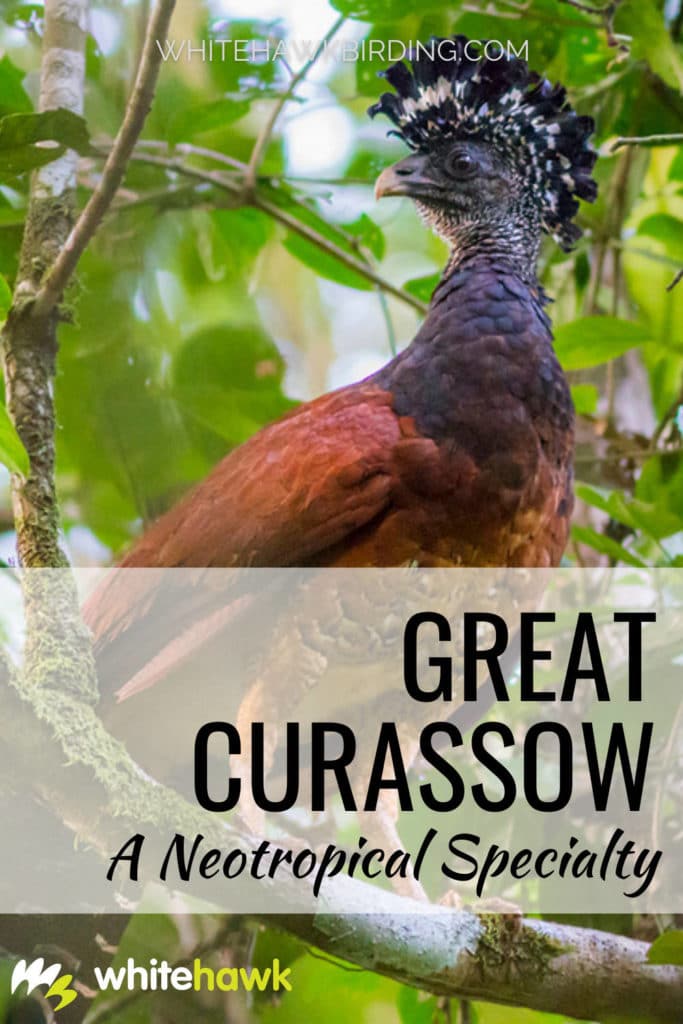Walking through the lowland rainforests of Central America, you hear a rustling off-trail along the forest floor. Scanning the dense foliage of the understory, you catch a glimpse of a large, turkey-like bird. It is glossy black all over with a bright yellow knob above the bill and a perfectly curled crest as if it were ready to go to a fancy dinner event. It can only be one bird – the Great Curassow.
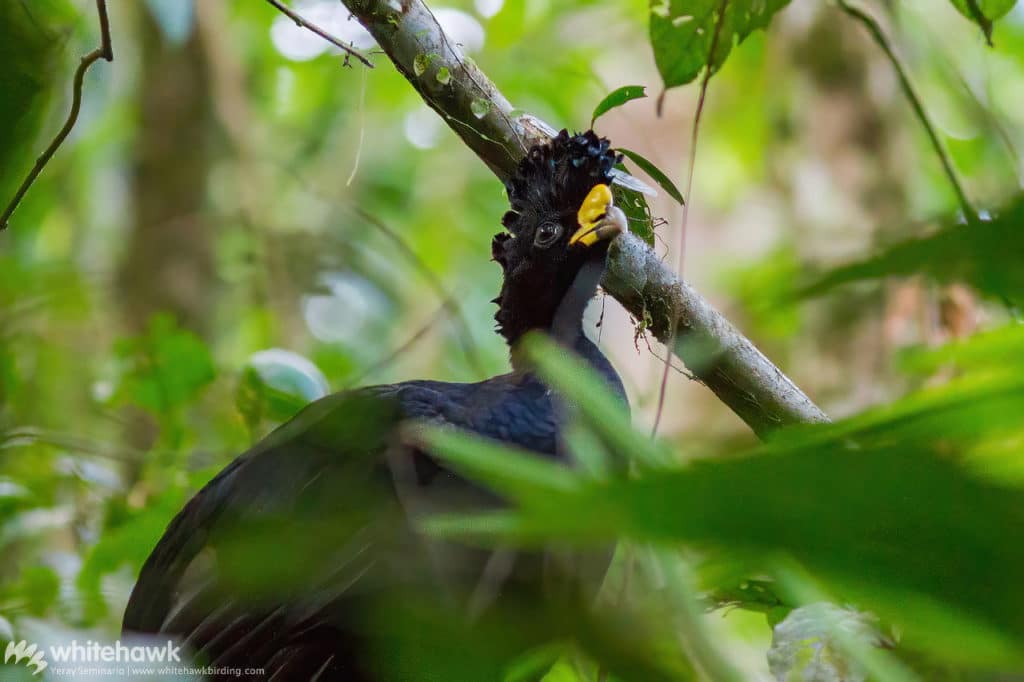
Curassows, guans and chachalacas, oh my!
The Great Curassow is the largest species of the family Cracidae. Cracids are a strictly Neotropical family of birds resembling chickens and turkeys, and includes chachalacas, guans, piping-guans, and curassows. There are 54 species in the family, distributed from the extreme southern USA (Texas, where the Plain Chachalaca can be found), throughout tropical South America. Most species are found in South America; but there are some Central American specialties, including the Gray-headed Chachalaca, Black Guan, and Great Curassow.
The Great Curassow, at nearly 1 meter in length, is the largest member of the Cracid family. There is quite a significant sexual dimorphism in this species, as males look completely different from females. Males are almost entirely shiny black with a white belly and have a striking yellow knob on their bills. Females are equally striking, a mix of rufous colors with variable barring over most of their body, wings, and tail. In fact, females come in three different plumage morphs: red-chestnut, dark brown, and barred. Both males and females have a very distinctive, curly crest. Males are larger than females; they range in weight from 7-10 lbs. Like turkeys, they have strong legs and large feet designed for walking on the ground.
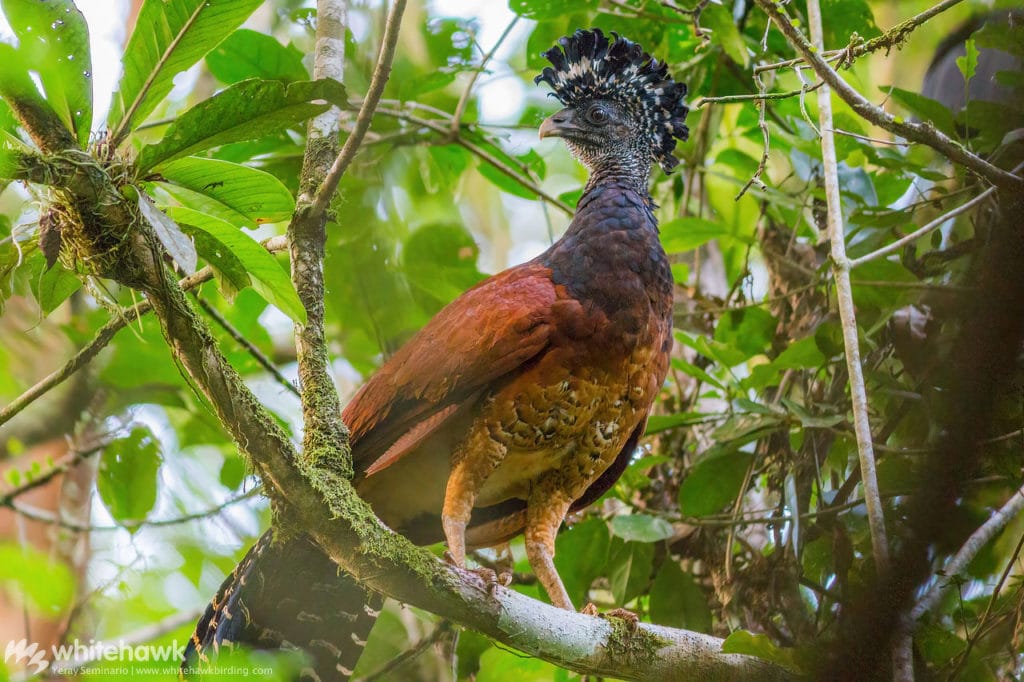
A Central American Specialty
Great Curassows are present throughout suitable habitat in Central America. Their range also extends slightly into northwestern South America, in the wet forests of western Colombia and Ecuador. However, their ancestors came from South America and spread north during the Great American Interchange. Panama was a key location for this great faunal migration, forming the land bridge between the continents. Many of these large, terrestrial birds decided to stay in the lowland rainforests where food and habitat were abundant.
The Great Curassow is most closely related to the Blue-billed Curassow, a critically endangered species endemic to northern Colombia. The two species were believed to be geographically and thus, genetically, separated when the Colombian Andes uplifted 6 million years ago. They are known to interbreed and produce fertile hybrids.
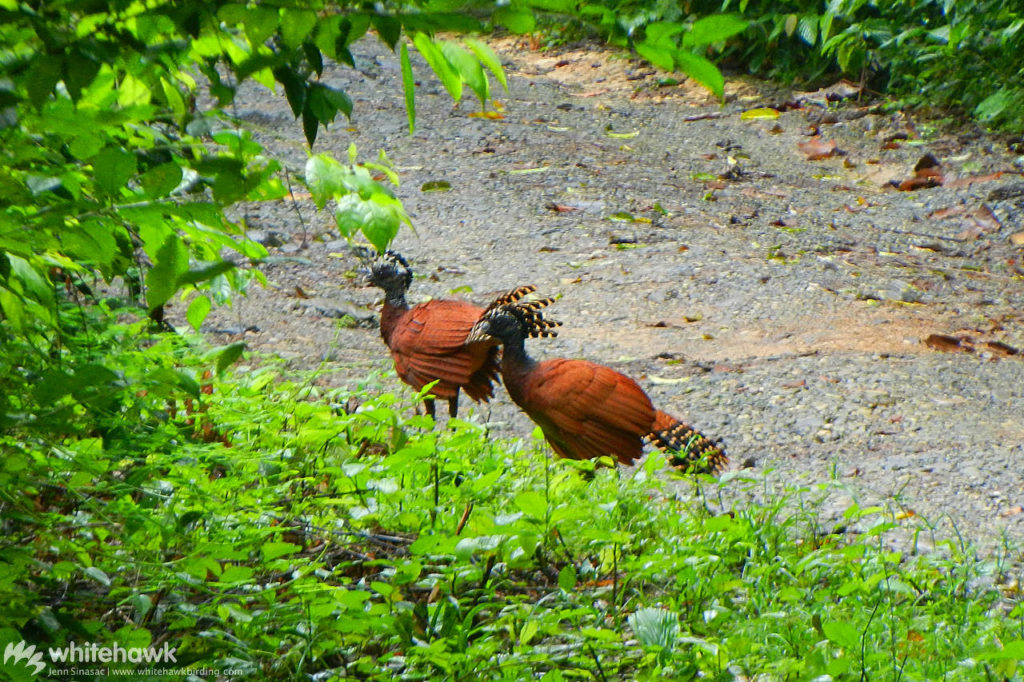
The Life of a Great Curassow
For a large ground bird in the rainforest, Great Curassows spend most of their time foraging the forest floor on foot. They are able to fly and occasionally ascend to branches in the midstory. If you disturb a Great Curassow, it may burst flight off the ground, giving you quite a startle! But most of the time, they just disappear out of sight on foot as quick as a flash. They forage on their own, in pairs, or in small groups. Great Curassows eat primarily fruits, which they find on the forest floor. However, they are opportunistic and will also eat insects, arthropods, and even small vertebrates. Despite the fact that they spend most of the time on the ground, Great Curassows nest and roost in trees.
When it comes to breeding, Great Curassows are monogamous. Males display for females, flashing their crests, tail, and belly feathers, and make a deep booming call. The male, sometimes with collaboration from the female, builds a simple, relatively small nest of leaves on a limb up to five meters above the forest floor. The female lays two eggs. Young are precocial (like chickens) and are feathered and mobile just after hatching.
Male Great Curassows sing from the rainforest canopy, a drawn-out whistle, similar to other curassows. Great Curassows also make short whistles, clucks, abrupt alarm calls, and deep-booming calls.
Adult Great Curassows have few natural predators, but they include ocelots and ornate hawk-eagles. Eggs and young have a wider range of predators, as one can imagine in a rainforest. Adults can be naturally aggressive to predators, attacking heads and eyes with their powerful legs and feet. Great Curassows also engage in a distraction display when defending their young, faking a broken wing to distract a predator.
Fun Facts About the Great Curassow
- It’s scientific name is Crax rubra, “rubra” referring to the reddish color of the females.
- The knob on the bill of the male is most pronounced during the breeding season.
- Scientists estimate population size to be around 40,000-50,000 individuals.
- Great Curassows are resident throughout their range, they do not migrate.
- We can find Great Curassows primarily in lowlands but, observers have reported them up to 1,900 meters elevation in Panama and Guatemala.
- Great Curassows often forage in small groups of up to a dozen individuals.
- There is an endemic subspecies on Cozumel Island in the Yucatan, Mexico. It is very rare, only about 300 individuals are known. The more common, nominate subspecies ranges from eastern Mexico to northwestern South America.
- Great Curassows interbreed and produce fertile hybrids with the Blue-billed Curassow and Black Curassow.
- Great Curassows can live up to 24 years in captivity.
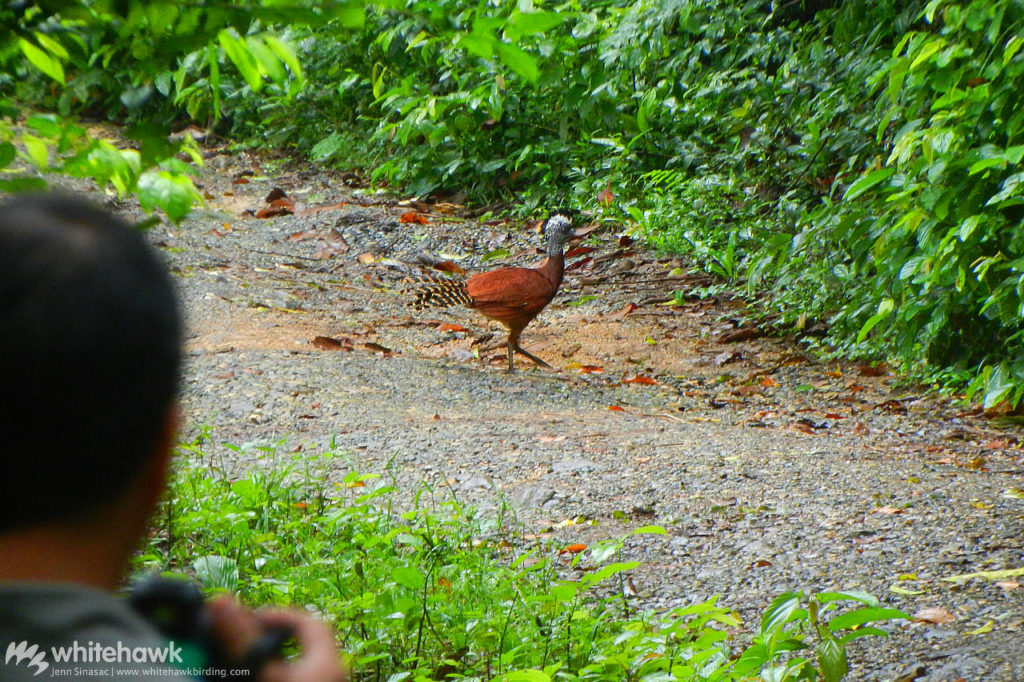
The Best Places to See a Great Curassow
Due to its size, the Great Curassow has been a major target for hunters throughout its range. As a result, they are very shy and restrict themselves to protected areas and remote forests where they feel safe. Their populations have also suffered from habitat loss. Great Curassows are currently listed as Vulnerable by the IUCN.
Fortunately, it is possible to see Great Curassows at a number of sites throughout their range, as more protected areas are being created and enforced. Calakmul Biosphere Reserve in Mexico, Chan Chich Lodge in Belize, Corcovado National Park in southern Costa Rica, and Darien National Park in eastern Panama are perhaps the best places to see Great Curassows with fair ease. Ask us more about the amazing Great Curassow, and we can help you add it to your life list!

